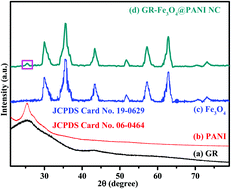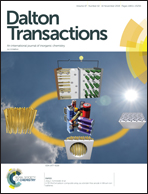Electrochemical study of specially designed graphene-Fe3O4-polyaniline nanocomposite as a high-performance anode for lithium-ion battery†
Abstract
In this work, an anode material with improved thermal stability, charge capacity, charge capacity retention, energy density, cyclic performance, operation safety, reversible capacity, and rate capability was synthesized for battery applications. The graphene-magnetite-polyaniline (Gr-Fe3O4-PANI) nanocomposites (NCs) are believed to deliver outstanding performance owing to the collective effect of the layered graphene (Gr) and magnetite (Fe3O4) hollow rods (HRs), as well as the better conductivity of polyaniline (PANI). The Gr-Fe3O4-PANI NCs easily enable the insertion and deinsertion of Li+, the passage of ions in the electrode, fast kinetics of Li+, and low volume expansion. Gr-Fe3O4-PANI NC was prepared by polymerizing aniline in the presence of already prepared Fe3O4 HRs, then dispersing in Gr. Fe3O4 HRs were synthesized by a hydrothermal route. Electrochemical properties were investigated by galvanostatic charge–discharge analysis and cyclic voltammetry. A lithium-ion battery (LIB) based on the Gr-Fe3O4-PANI exhibited a superior reversible current capacity of 1214 mA h g−1, excellent power capability, low volume expansion, high cycling stability and 99.6% coulombic efficiency over 250 cycles.



 Please wait while we load your content...
Please wait while we load your content...